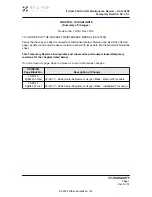
- 7 -
2
PARATECH Technology
2.1
Computer Aided Design
A number of Computer-Aided-Design packages have been used to develop the
P80’s wing shape and profile. The shape of each and every P80 is reproduced
during the manufacturing process with the highest precision employing CNC
driven cutting tools.
2.2 Wing Shape
The P80 presents an elegant, aesthetically shaped wing form of high
aerodynamic quality combined with passive safety.
2.3 Wing Profile
The P80’s profile has been researched and refined by PARATECH through
intensive and demanding numerical modelling and practical trial work. A variable
profile along the entire span of the wing provides for optimal lift distribution. This
is only one of many reasons for the P80’s balanced combination of performance
and stability.
2.4 Leading Edge Cell Opening with PAF (Permanent Air Flow)
We call our newly developed Zigzag leading edge opening “Permanent Air Flow”
(PAF). It is a continuation of our research in partially closed wing cells. The
system allows the efficient, steady and quick filling of the cells at all “Angles of
Attack” (AOA) despite the extremely small opening size. These are just some of
the reasons for the P80’s good natured inflation characteristics during take-off
and the high trim speed achievable during flight.
2.5 Wing Reinforcement
Careful design of the P80’s wing reinforcement provides on the one hand
strength in critical areas, but also plays an important role in maintaining the cell
inflation at the start and quick reinflation during turbulence induced wing tucks.
Summary of Contents for P80
Page 1: ...1 P80 Manual...
































